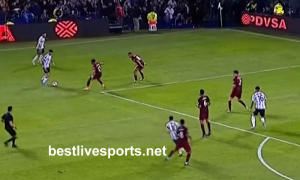If you’re a fan of football, you probably want to play it at some point in your life — and that’s why you’re reading this article! Football can be intimidating to those who are unfamiliar with it, but the basics are really quite simple. We’ll teach you all about the rules of the game and everything else you need to know to get started playing football today! Check out these tips on how to play football rules and history.

The Basics
Football is a game played between two teams. Each team has 11 players on the field at one time. The players on the field are typically divided into an offensive team who tries to advance the ball downfield, and a defensive team that tries to stop them from doing so. The offense starts with possession of the ball and must advance it past their opponent’s goal line in order for it to be considered a touchdown.
Getting Started
Football is one of the most popular sports in America. It’s a sport that has been played for many years, but it’s not always clear how to play football or what rules apply. So if you’re interested in learning more about this exciting game, read on! The basics of the game are pretty simple. Two teams line up across from each other with eleven players on each side, only ten can be on the field at any given time. The team who has possession of the ball is defending while the other team tries to take it away by tackling them or catching it before they do so they can advance downfield with it themselves. If you want to learn more about playing football, keep reading!

The Gridiron
The playing field is 100 yards long. The first 10 yards of the field are called the End Zone. The next 15 yards down each end line are called the Sidelines. From there, the next 50 yards are known as the Field. There are two other zones on each side of the End Zone, and they’re called Touchback Zones. If a ball goes past either Touchback Zone, it’s out of bounds. This means that if someone catches a ball in one of those zones, they can walk back toward their team without getting tackled. Once you get to the Field, there’s an area called the End Line with an X in chalk at one end.
The Offense
1. The offense has four downs to make 10 yards or reach the end zone. 2. If they don’t, they turn over the ball to the other team, but if they’re in their own territory, they may punt on 4th down. 3. To advance the ball by running or passing it, the quarterback usually hands it off (or tosses it) to a back or throws it out wide. There are only a few people eligible receivers on each play so there is always someone open for the pass depending on what coverage scheme is being used by the opposing defense team. 4. The play ends when either somebody runs out of bounds, when an interception occurs, or when a touchdown is made (except for conversion attempts).
The Defense
On defense, the goal is to stop the other team’s offense from scoring. Most teams have 11 players on the field at a time on defense, but there are some exceptions. For example, defenses typically put 12 players on the field in American football leagues if they are expecting a pass play because that would mean one more defender covering a receiver.
Scoring Points
A touchdown is worth six points, a field goal three points, and an extra point (after a touchdown) one point. safety is worth two points. The team with the most points at the end of the game wins.
Penalties, Fouls, and Violations
The penalty for violating any of the rules is a 5-yard penalty. There are two types of penalties in football. A live-ball foul happens when you commit a personal foul against an opponent with the ball or during a down or before any play begins. A dead-ball foul happens when you commit a non-contact personal foul against an opponent who does not have the ball (such as blocking out of bounds). Live-ball fouls are enforced from the spot where the ball was snapped until it is next touched by either team or player. Dead-ball fouls are enforced from where the contact occurred after one down has been run.
Understanding Each Player’s Role on the Team
The quarterback is the leader of the team, deciding which plays the team will run on offense. The quarterback also needs to be able to read defenses and make quick decisions about what play should be called. On defense, a quarterback will cover the opposing teams running back or wide receiver.
The running back is usually one of the most versatile players on offense. They can take handoffs from the quarterback, catch passes out of the backfield, or line up in front of a fullback as a blocker. On defense, they are usually assigned either blocking duty or pass coverage on an outside receiver.
The tight end lines up primarily on offense as a blocker for either receivers or running backs at any given time, but they can also split out wide like a receiver if needed in certain formations.





